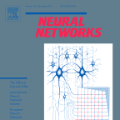In many applications, it is desirable that a classifier not only makes accurate predictions, but also outputs calibrated probabilities. However, many existing classifiers, especially deep neural network classifiers, tend not to be calibrated. Post-hoc calibration is a technique to recalibrate a model, and its goal is to learn a calibration map. Existing approaches mostly focus on constructing calibration maps with low calibration errors. Contrary to these methods, we study post-hoc calibration for multi-class classification under constraints, as a calibrator with a low calibration error does not necessarily mean it is useful in practice. In this paper, we introduce two practical constraints to be taken into consideration. We then present Meta-Cal, which is built from a base calibrator and a ranking model. Under some mild assumptions, two high-probability bounds are given with respect to these constraints. Empirical results on CIFAR-10, CIFAR-100 and ImageNet and a range of popular network architectures show our proposed method significantly outperforms the current state of the art for post-hoc multi-class classification calibration.
翻译:在许多应用中,分类者最好不仅作出准确的预测,而且还要提出经校准的概率。然而,许多现有的分类者,特别是深神经网络分类者,往往没有进行校准。 热后校准是一种调整模型的技术,目标是学习校准地图。 现有方法主要侧重于在低校准误差的情况下绘制校准地图。 与这些方法相反,我们研究在限制下对多级分类进行校准后校准,因为使用低校准差错的校准器不一定意味着在实践中有用。 在本文中,我们引入了两个实际的限制因素有待考虑。 然后我们提出Meta-Cal,这是从一个基础校准器和一个排名模型中建起的。根据一些温和的假设,对于这些限制因素有两个高概率界限。 关于CIFAR-10、CIFAR-100和图像网络以及一系列广受欢迎的网络结构的实证结果显示,我们所提议的方法大大优于目前多级校准的艺术状态。




